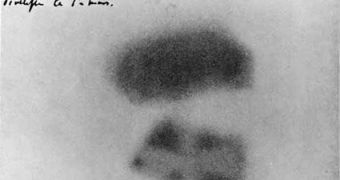The Japanese Kaguya spacecraft, launched in 2007, transmitted back readings that confirmed the presence of the rare chemical uranium on the surface of the Moon. For the first time, astronomers and astrophysicists have definitive proof that an energy source for a future lunar base is readily available on the Earth's natural satellite. This solves a long-standing problem that potential Moon bases had, of having to be supplied from Earth alone, or rely on solar energy for their operation. The finds were presented at the 40th Lunar and Planetary Conference and at the Proceedings of the International Workshop Advances in Cosmic Ray Science, Space informs.
Additionally to providing a much-needed resource for a permanent human settlement on the Moon, the find holds great potential for mining expeditions to the satellite. When the resource becomes depleted here, it may become feasible to go out to the lunar surface and harvest it, as a there-and-back mission would have the ability to carry seriously large amounts of the stuff in special sealed containers that would protect future astronauts from the chemical's harmful radiations. Moreover, identifying plentiful uranium deposits could be the decisive factor in establishing the location of human bases there.
“We've already gotten uranium results, which have never been reported before. We're getting more new elements and refining and confirming results found on the old maps,” expert Robert Reedy explains. He works for the Tucson-based Planetary Science Institute as a senior scientist, and is also a member of the science team managing the Kaguya space probe. The craft detected the deposits just lying in the lunar dirt by using its gamma-ray spectrometer instrument. The goal of the mission is to create maps detailing the chemical composition of the surface of the Moon, over the largest area possible.
Thus far, its spectrometer has identified such elements as oxygen, iron, calcium, silicon, titanium, magnesium, potassium and thorium, but mission controllers say that many more will be found in the near future. The space probe made the discovery as it ended its mission, crashing into the lunar surface on June 10th, and leaving behind an HD movie of its final descent. The mission, officially named Selenological and Engineering Explorer (SELENE), was declared a resounding success.

 14 DAY TRIAL //
14 DAY TRIAL //